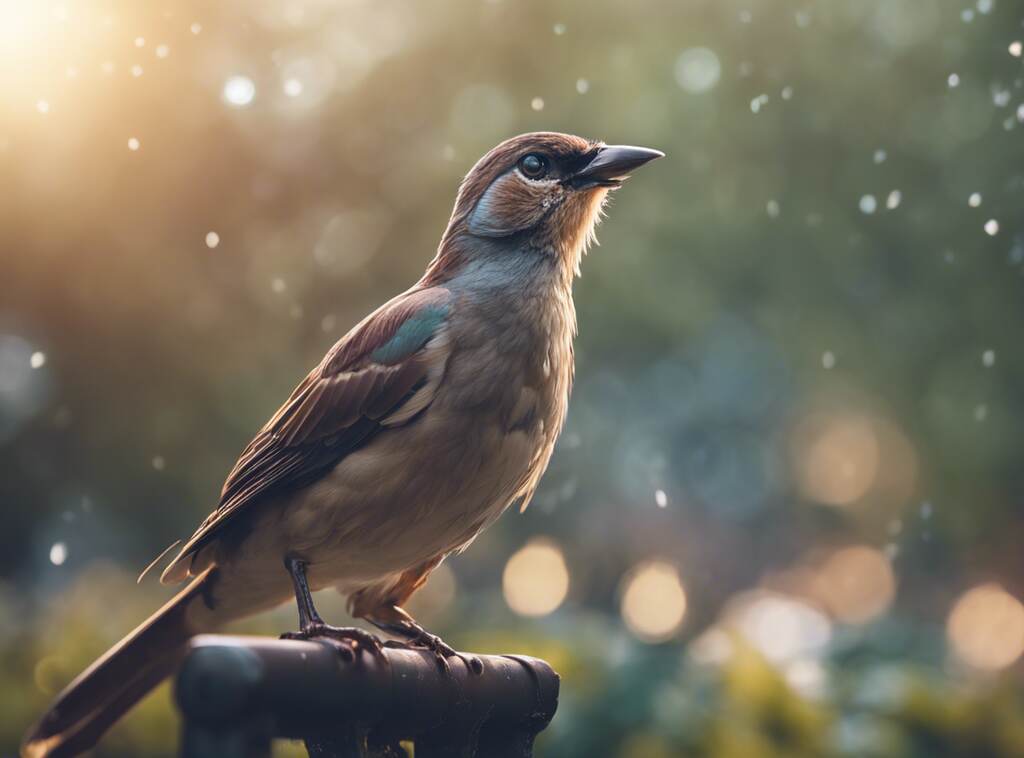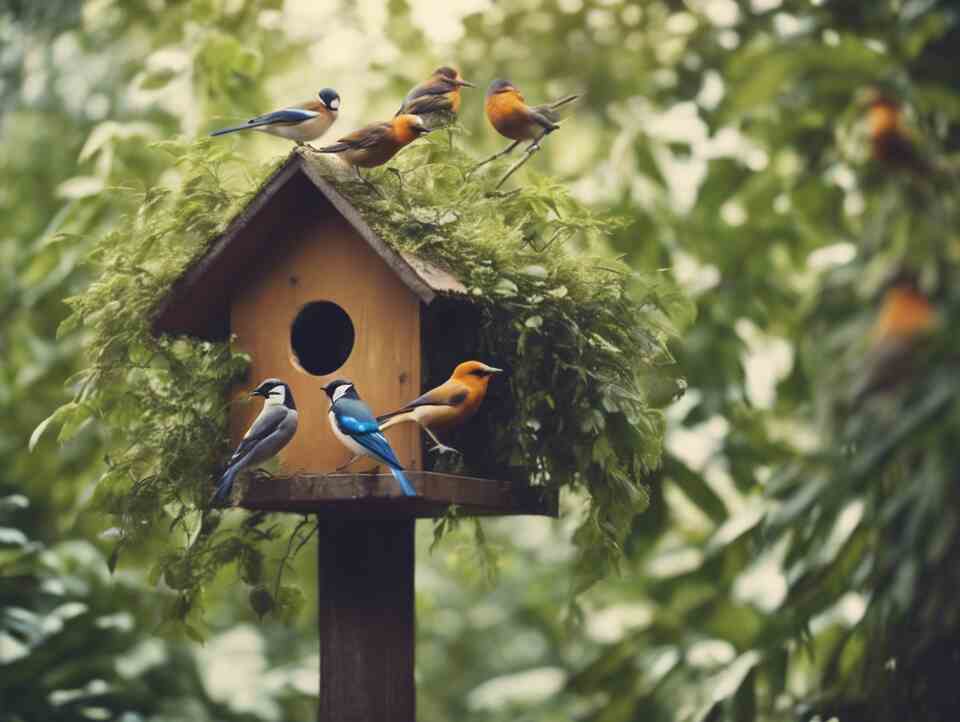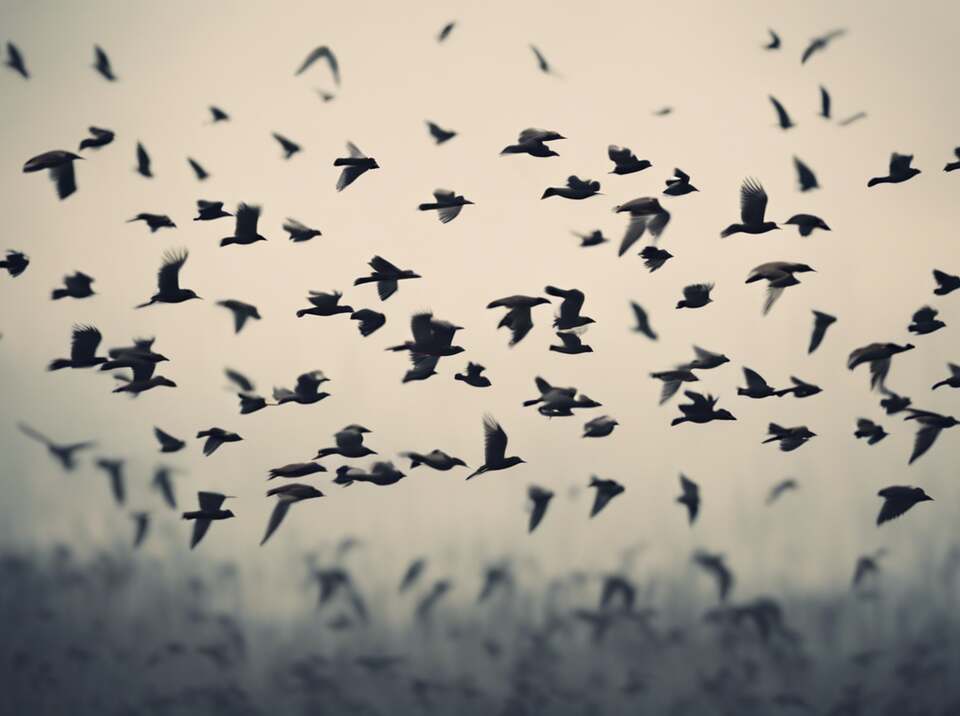Birds are fascinating creatures that have evolved a myriad of adaptations and strategies to protect themselves from various threats in their environment. From natural predators to harsh weather conditions, birds have developed remarkable ways to ensure their survival. Let’s explore some of the most intriguing methods that birds employ for self-protection.
Table of Contents
Adaptations and Strategies Used by Birds to Protect Themselves
Camouflage: Blending In for Survival
One of the most common strategies birds use to protect themselves is camouflage. Many bird species have evolved colors and patterns on their feathers that help them blend in seamlessly with their surroundings. This allows them to become practically invisible to predators, making it easier to avoid detection and escape when necessary. For example, the cryptic plumage of owls enables them to perch in trees unnoticed during the day, relying on their camouflage to stay hidden from other birds of prey.
Warning Calls: Signaling Danger
Birds also utilize vocalizations as a form of defense mechanism. By emitting specific warning calls or alarm signals, birds alert others in their flock or nearby individuals of potential threats. This proactive strategy not only helps to warn fellow birds of danger but also confuses predators, making it harder for them to catch their prey. For instance, meerkats are known to emit different alarm calls for aerial and ground predators, allowing the entire group to take evasive action promptly.
Physical Defenses: Armor and Weapons
Some bird species have developed physical defenses that serve as armor or weapons against predators. For example, the hoatzin, a bird found in South America, possesses sharp spines on its wings that deter predators from attacking it. Additionally, birds like the cassowary have powerful legs with dagger-like claws that they can use for self-defense when threatened. These physical adaptations play a crucial role in ensuring the bird’s safety in their natural habitat.
Nesting Behavior: Securing Future Generations
Nesting behavior is another essential aspect of bird self-protection strategies. Birds often choose secluded or hard-to-reach locations to build their nests, reducing the risk of predation. Some species, like the Montezuma oropendola, build elaborate nests high in trees to deter potential predators from reaching their eggs or chicks. By selecting strategic nesting sites and fortifying their nests, birds increase the chances of their offspring surviving to adulthood.
Mobbing Behavior: Strength in Numbers
In the face of a common threat, birds exhibit mobbing behavior, where multiple individuals band together to harass a predator. This collective defense strategy is observed in various bird species, such as crows and chickadees, who work together to drive away larger predators like hawks or owls. By mobbing a predator, birds not only protect themselves but also send a clear message that they are not easy targets, deterring future attacks.
Birds have evolved a diverse range of adaptations and strategies to protect themselves from predators and other threats. From camouflaging themselves to warning calls, physical defenses, nesting behavior, and mobbing, birds employ a combination of tactics to ensure their survival in challenging environments. By understanding these remarkable self-protection methods, we gain a deeper appreciation for the resilience and ingenuity of avian species in the natural world.
The Role of Camouflage in Bird Defense Mechanisms
Camouflage: A Vital Tool for Bird Defense Mechanisms
Birds have evolved various defense mechanisms to protect themselves from predators in their natural habitats. One of the most crucial strategies that birds employ is camouflage. Camouflage plays a vital role in helping birds blend into their surroundings, making them less visible to predators and increasing their chances of survival. Let’s explore how birds use camouflage as a key defense mechanism.
Importance of Camouflage in Bird Survival
Camouflage is a form of concealment that allows birds to avoid detection by blending in with their environment. Birds use a combination of coloration, patterns, and behavior to camouflage themselves effectively. This adaptation is essential for survival as it helps birds evade predators and increase their chances of successfully hunting for prey.
Types of Camouflage in Birds
There are various types of camouflage employed by birds, each suited to different environments and behavioral patterns. Cryptic camouflage involves the use of coloration and patterns to match the surroundings, such as tree bark or leaves. This type of camouflage helps birds remain unnoticed by blending seamlessly with their habitat.
Behavioral Camouflage Tactics
In addition to physical camouflage, birds also use behavioral tactics to enhance their ability to remain undetected. For example, some species will freeze in place when they sense danger, relying on their lack of movement to avoid being noticed by predators. Others may use distraction techniques to lead predators away from their nests or vulnerable offspring.
Camouflage Adaptations in Different Bird Species
Different bird species have unique adaptations for camouflage based on their habitats and behaviors. For example, owls have specialized plumage that helps them blend into tree bark, allowing them to remain hidden during the day. Shorebirds often have coloration that matches the sandy or rocky shorelines where they forage for food.
Evolution of Camouflage in Birds
Camouflage in birds has evolved over millions of years in response to the pressures of predation. Birds that were better able to conceal themselves from predators were more likely to survive and pass on their genes to the next generation. As a result, camouflage has become a widespread and highly effective defense mechanism in the avian world.
Human Impacts on Bird Camouflage
Human activities, such as deforestation and urbanization, have significantly impacted bird populations and their ability to camouflage effectively. Loss of natural habitats and increased exposure to human-made structures have made it more challenging for birds to blend in with their surroundings, making them more vulnerable to predation.
Camouflage plays a crucial role in the defense mechanisms of birds, helping them evade predators and increase their chances of survival. Understanding how birds use camouflage can provide valuable insights into the complex relationship between predators and their prey in the natural world. By appreciating the intricacies of avian camouflage, we can gain a deeper appreciation for the remarkable adaptability of these fascinating creatures.
Conclusion
In the intricate world of birds, the evolution of adaptations and strategies to protect themselves has been a marvel to witness. Through a combination of physical features, behaviors, and instinctual actions, birds have developed a repertoire of defense mechanisms that enable them to thrive in diverse environments. Among these strategies, camouflage stands out as a key element in the intricate dance between predator and prey in the avian world.
Camouflage plays a crucial role in the survival of birds by allowing them to blend seamlessly into their surroundings, making them virtually invisible to predators and unsuspecting prey alike. Whether it’s the cryptic coloration of an owl’s feathers matching the bark of a tree, or the disruptive patterns on a plover’s eggs that break up its outline in the sand, camouflage is a powerful tool that birds use to evade detection and protect themselves from harm.
The intricate patterns and colors that birds have evolved over time serve as a testament to the remarkable creativity of nature in its relentless quest for survival. From the dazzling plumage of male peacocks that dazzles and distracts predators, to the understated earth tones of a nightjar that allow it to disappear into the landscape, the diversity of camouflage strategies employed by birds is truly awe-inspiring.
In addition to physical adaptations, birds also rely on a range of behavioral strategies to protect themselves from harm. From forming large flocks to confuse predators, to emitting alarm calls to alert others of danger, birds exhibit a remarkable degree of intelligence and cooperation in their efforts to stay safe. By working together and communicating effectively, birds are able to enhance their collective survival chances and minimize the risk of predation.
As we delve deeper into the world of bird defense mechanisms, it becomes clear that the intricate interplay between adaptations and strategies is essential for the survival of avian species. From the stealthy hunters of the night to the brightly colored inhabitants of tropical rainforests, each bird has honed its own unique set of skills to navigate the challenges of its environment and protect itself from harm.
The world of birds is a fascinating tapestry of adaptations and strategies designed to protect themselves from the myriad threats they face every day. From the role of camouflage in concealing their presence to the behavioral tactics they employ to outwit predators, birds have evolved a diverse array of defense mechanisms that highlight the ingenuity and resilience of the avian world.
By studying and appreciating the ways in which birds protect themselves, we gain a deeper understanding of the power of adaptation and the beauty of nature’s endless creativity.




